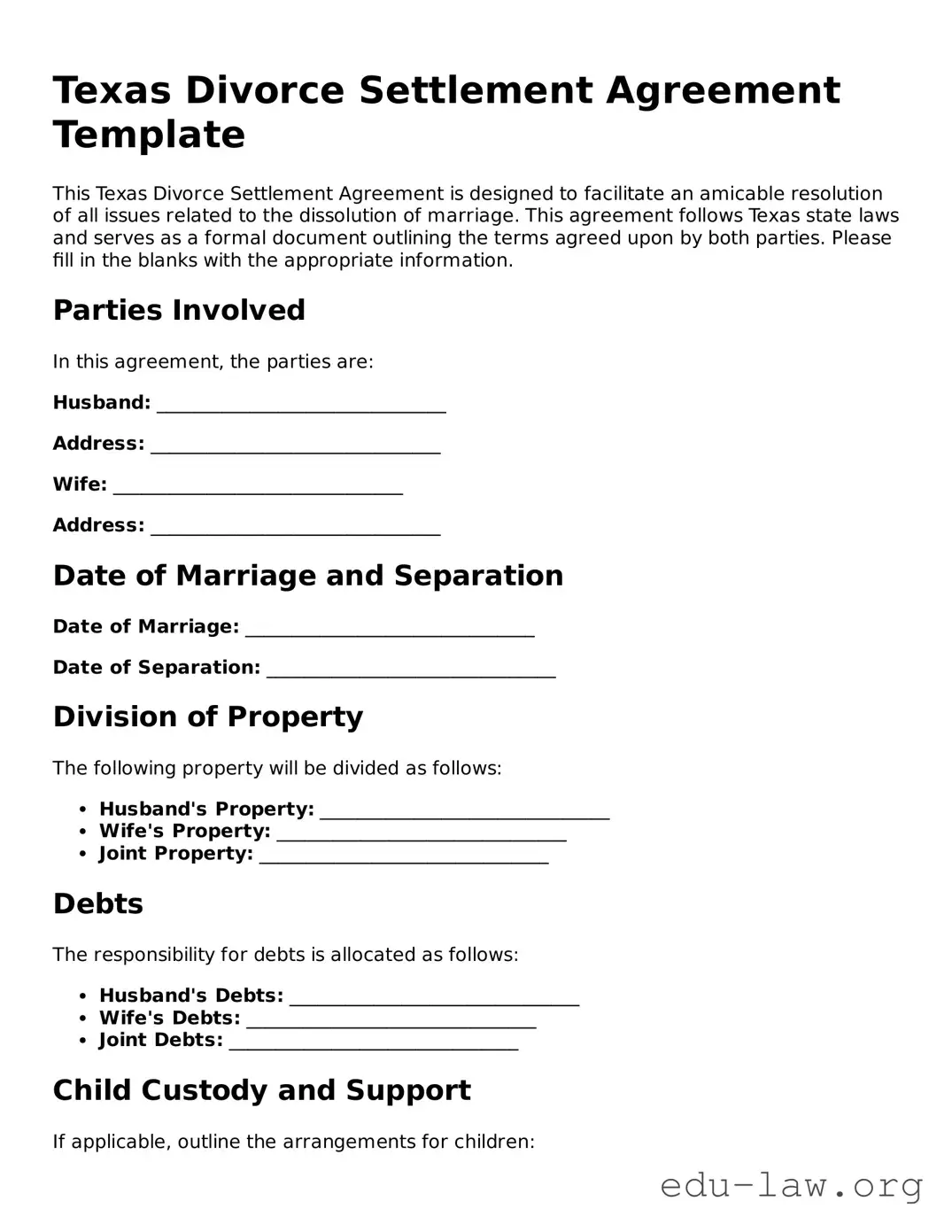Texas Divorce Settlement Agreement Template
This Texas Divorce Settlement Agreement is designed to facilitate an amicable resolution of all issues related to the dissolution of marriage. This agreement follows Texas state laws and serves as a formal document outlining the terms agreed upon by both parties. Please fill in the blanks with the appropriate information.
Parties Involved
In this agreement, the parties are:
Husband: _______________________________
Address: _______________________________
Wife: _______________________________
Address: _______________________________
Date of Marriage and Separation
Date of Marriage: _______________________________
Date of Separation: _______________________________
Division of Property
The following property will be divided as follows:
- Husband's Property: _______________________________
- Wife's Property: _______________________________
- Joint Property: _______________________________
Debts
The responsibility for debts is allocated as follows:
- Husband's Debts: _______________________________
- Wife's Debts: _______________________________
- Joint Debts: _______________________________
Child Custody and Support
If applicable, outline the arrangements for children:
Children's Names and Ages:
- _______________________________
- _______________________________
Custody Arrangement: _______________________________
Child Support Amount: _______________________________
Spousal Support
If applicable, outline any spousal support:
Spousal Support Amount: _______________________________
Duration of Spousal Support: _______________________________
Additional Provisions
Any additional terms can be specified below:
_________________________________________________________________
Agreement Acknowledgment
By signing below, both parties agree to the terms and conditions set forth in this Texas Divorce Settlement Agreement:
Husband's Signature: _______________________________
Date: _______________________________
Wife's Signature: _______________________________
Date: _______________________________
This document is intended to be a binding legal agreement. It may be advisable for both parties to seek independent legal counsel before signing.
